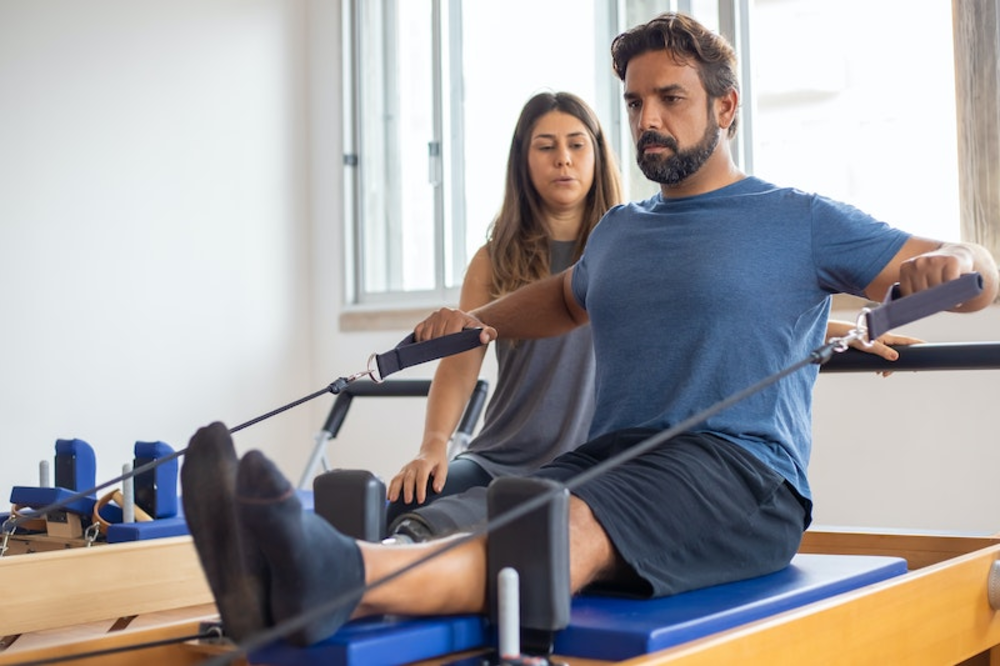In today’s fast-paced world, injuries can happen to anyone, regardless of age or fitness level. Accidents, sports mishaps, or simple wear and tear can lead to physical discomfort or limitations that require professional guidance.
Personal training plays a vital role in helping individuals recover from injuries, regain their strength, and return to their active lifestyle.
As a personal trainer , you have the unique opportunity to not only help clients achieve their fitness goals but also guide them through the challenging journey of injury rehabilitation.
This article will dive into the importance of personal trainers in injury rehabilitation, explore various aspects of the recovery process, and provide practical tips and strategies to assist clients on their path to healing.
By understanding the complexities of injury rehabilitation, you’ll be better equipped to support your clients and contribute to their well-being.
Understanding Injuries and the Recovery Process
A variety of injuries can occur, such as a physical injury from an accident or a sports injury from athletic activities. Regardless of the type of injury, the recovery process typically involves several stages and requires a combination of treatments and approaches, including fitness networking to connect with professionals and resources to support recovery.
Physical therapy
After a medical or surgical procedure, often, a physical therapist works with the injured person to develop a treatment plan that addresses their specific needs.
Physical therapy can help the person get back to where they were by restoring mobility, improving function, and alleviating pain.
Collaboration between personal trainers and physical therapists
As a personal trainer, it’s important to communicate and collaborate with the physical therapists involved in your client’s care.
By working together, you can ensure that your client’s exercise plan complements their therapy sessions and supports their recovery goals.
Mental aspect
Maintaining a positive mindset is crucial during the recovery process. As a personal trainer, you can play a significant role in helping your clients stay motivated, focused, and committed to their healing journey.
Encourage them to stay positive and remind them that setbacks are a natural part of the recovery process.
Developing an Exercise Plan for Clients with Injuries
Creating an exercise plan for clients with injuries requires a keen eye and a thoughtful approach. It is important to keep the following steps in mind.
Assessing Physical Limitations and Fitness Goals
Before designing an exercise plan for a client with an injury, you need to understand their physical limitations and fitness goals.
Conduct a thorough assessment and discuss their objectives to ensure your plan supports their recovery and long-term health.
Designing a Tailored Exercise Plan
Develop a tailored exercise plan that targets the specific injury and considers any existing physical limitations. Research and consult with physical therapists to select appropriate exercises for your client’s condition. This may include exercises for strengthening, flexibility, or balance.
When necessary, modify exercises to accommodate your client’s physical limitations. This may involve using alternative movements, reducing the intensity, or providing additional support during the exercise.
Monitoring Progress and Adjusting the Exercise Plan as Needed
Regularly assess your client’s progress and adjust their exercise plan accordingly, incorporating workout challenges that are safe and appropriate for their current level of recovery.
Keep track of their pain levels and any changes in their overall health and well-being.
Strategies for Supporting Clients through the Recovery Process
Navigating the recovery process from an injury can be a complex and challenging journey for your clients. As a personal trainer, it’s your mission to provide the right support and guidance every step of the way. Let’s take a look at some strategies for supporting your clients during recovery.
Ensuring a safe and effective exercise environment

Create a safe and supportive environment for your clients to exercise in. This may include providing appropriate equipment, ensuring proper form, and closely monitoring your clients during their workouts. Be well-versed in spotting techniques and know when to intervene if a client is at risk for further injury.
Encouraging an active lifestyle

Help your clients maintain an active lifestyle during their recovery process by suggesting low-impact activities or alternative exercises that they can safely engage in outside of your sessions. This can help them maintain their fitness levels and contribute to a faster recovery.
Helping clients maintain a positive mindset

As a personal trainer, you can play a significant role in helping your clients stay motivated and positive during their recovery.
Offer encouragement, celebrate their progress, and remind them of their long-term fitness goals. Share stories of others who have successfully recovered from similar injuries to inspire and motivate your clients.
Communicating with health professionals

Maintain open lines of communication with your client’s physical therapists, surgeons, or other health professionals to ensure a cohesive approach to their recovery. Update them on your client’s progress and discuss any concerns or adjustments that need to be made to the exercise plan.
Injury Prevention and Long-term Health
Maintain open lines of communication with your client’s physical therapists, surgeons, or other health professionals to ensure a cohesive approach to their recovery. Update them on your client’s progress and discuss any concerns or adjustments that need to be made to the exercise plan.
Injury Prevention and Long-term Health
Injury prevention and long-term health go hand in hand when it comes to helping your clients lead active and fulfilling life. But let’s face it, maintaining a healthy lifestyle isn’t always a walk in the park. The following are some insightful ways to keep your clients on track, prevent injuries, and promote lasting well-being.
Educating clients on injury prevention techniques: Teach your clients about proper form, stretching, and warm-up routines to help prevent future injuries by providing them with relevant fitness content that they can access and review outside of your sessions. Emphasize the importance of listening to their body and knowing when to rest or modify an exercise.
Strengthening surrounding muscles: Work with your clients to strengthen the muscles surrounding the injured area, as this can help prevent future injuries and support overall stability and function. Focus on improving muscle imbalances and incorporating functional exercises that mimic real-life movements.
Helping clients set realistic fitness goals: Assist your clients in setting achievable, realistic fitness goals that take into account their recovery process and long-term health. Regularly reassess these goals and adjust them as needed to keep your clients motivated and on track.
Promoting overall health and well-being: Encourage your clients to adopt healthy habits, such as proper nutrition, adequate sleep, and stress management, to support their recovery and overall well-being. Remind them that a healthy lifestyle goes beyond just exercising and includes all aspects of their life.
Conclusion
The role of personal trainers in injury rehabilitation is invaluable. By understanding the complexities of injury rehabilitation and using your knowledge and skills to support clients during their recovery process, you can make a significant impact on their lives, following the path of successful fitness entrepreneurs who have made a difference in the lives of their clients.
Collaboration with other health professionals, creating tailored exercise plans, and promoting a positive mindset are just a few of the ways personal trainers can contribute to the healing journey.
As a personal trainer, you have the unique opportunity to guide your clients towards a healthier, more active lifestyle, and ultimately, help them overcome their injuries and achieve their fitness goals.




